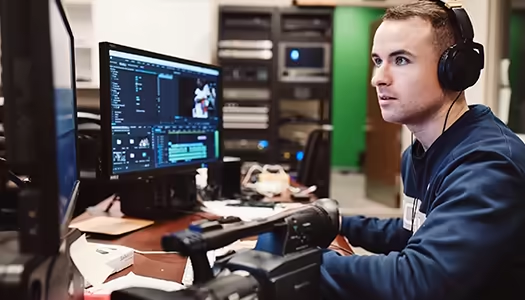In this exploration, we unravel the profound impact of technological advances on video translations, specifically examining the role of machine translation and artificial intelligence (AI) in enhancing efficiency and accuracy. The focal question guiding our inquiry is, "How to translate video to English?" This question serves as a gateway into the dynamic realm where linguistic nuances meet the precision of cutting-edge technology.
The Evolution of Translation: From Manual to Technological Prowess
The traditional process of translating videos was a manual endeavor, requiring linguistic expertise, cultural understanding, and a meticulous eye for detail. Imagine encountering a German video brimming with valuable content. The question naturally arises, "How to translate video from German to English?" This question marks the initiation of our exploration into the transformative role of technology in redefining the translation landscape.
Machine Translation: Enhancing Speed and Scalability
Efficiency through Automation
The phrase "translate video from German to English" takes on a new dimension with the advent of machine translation. Machine translation technologies, fueled by algorithms and vast linguistic databases, automate the translation process. This automation enhances efficiency, allowing for the rapid conversion of content at a scale that was once inconceivable with manual methods.
Streamlining Content Distribution
Machine translation facilitates the seamless distribution of content across linguistic boundaries. Whether it's educational videos, marketing materials, or global communications, the efficiency of machine translation ensures that businesses and institutions can reach diverse audiences without the time constraints associated with traditional translation methods.
Artificial Intelligence: Navigating Nuances and Context
Contextual Understanding
AI brings a layer of sophistication to video translations through contextual understanding. The phrase "translate video from German to English" with the assistance of AI involves not only linguistic conversion but also an understanding of context. AI algorithms analyze the nuances of language, considering idioms, colloquial expressions, and cultural references to produce translations that go beyond literal interpretations.
Improving Accuracy over Time
One of the remarkable features of AI in translation is its ability to learn and improve over time. As algorithms process vast amounts of linguistic data, they adapt to linguistic shifts and evolving expressions. This iterative learning process contributes to increased accuracy, ensuring that the translated content resonates more authentically with the target audience.
Challenges and Considerations in Technological Translation
Navigating Linguistic Nuances
While technology has made significant strides, challenges persist in navigating the intricacies of linguistic nuances. The phrase "translate video from German to English" may encounter hurdles in capturing cultural subtleties, wordplay, or industry-specific terminology. Human oversight becomes crucial to maintain the quality and authenticity of translations.
The Importance of Post-Editing
Even with the efficiency of machine translation and the sophistication of AI, post-editing remains a critical step. Human translators bring their nuanced understanding of language and culture to refine machine-generated translations, ensuring that the final output aligns with the intended message and cultural context.
The Human-Machine Collaboration: Striking a Balance
The Role of Human Translators
In the evolving landscape of video translations, the symbiotic relationship between humans and machines is evident. The phrase "translate video from German to English" is not solely about machines replacing human translators; it's about leveraging technology to enhance the capabilities of human experts. Human translators provide the finesse, cultural sensitivity, and creative intuition that machines may lack.
Balancing Efficiency and Quality
The challenge lies in striking a balance between efficiency and quality. Technology accelerates the translation process, allowing for large-scale projects and real-time communication. However, this efficiency should not compromise the accuracy, cultural appropriateness, and overall quality of the translated content.
Future Horizons: Integrating Personalization and User Preferences
Customizing Translations to User Preferences
Looking ahead, the future of video translations involves integrating personalization and user preferences. The phrase "translate video from German to English" may evolve into a user-driven experience where individuals can customize translations based on their language proficiency, cultural background, and preferences.
AI-Powered User Interaction
Advancements in AI may lead to more interactive and dynamic user experiences. Users could engage with translated content in real-time, adjusting language settings, and providing feedback that contributes to continuous improvement in translation algorithms.
Closing Thoughts: A Technological Tapestry of Communication
Machine translation and AI bring efficiency, scalability, and contextual understanding to the forefront, reshaping how we communicate across linguistic boundaries. As we navigate the evolving landscape of video translations, let us recognize the transformative potential of technology in fostering a more connected and globally engaged world.


